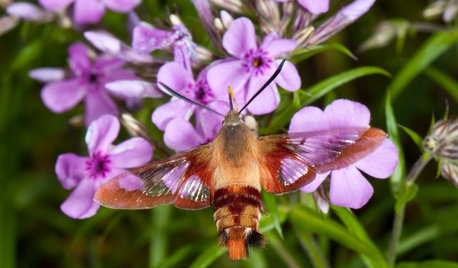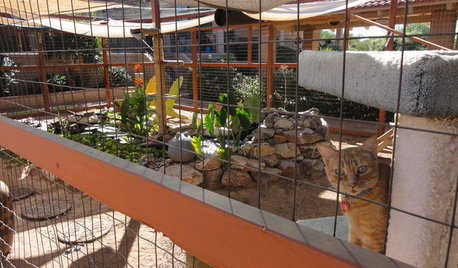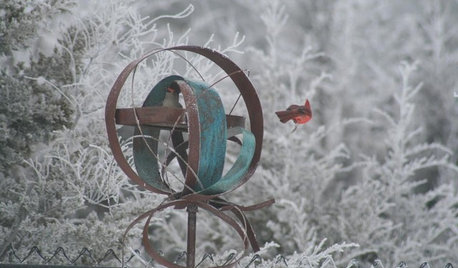Anybody see Winter Moths?
claireplymouth z6b coastal MA
18 years ago
Related Stories

GARDENING GUIDESHummingbird or Moth? See Why You Want Clearwings Around
These fascinating moths may be helpful pollinators for your garden. Here’s how to coax them your way
Full Story
HOUSEPLANTSOrchids 101: How to Keep Your Moth Orchids Alive and Blooming
Growing Phalaenopsis — and getting it to flower again — is easier than you might think
Full Story
MODERN HOMESHouzz Tour: Seeing the Light in a Sydney Terrace House
A narrow row house gains lots of interior sunshine and a connection to the outdoors without sacrificing privacy
Full Story
KITCHEN DESIGNHere It Is! See Our Finished Kitchen Sweepstakes Makeover
This lucky New Jersey homeowner got improved storage, upgraded finishes and a better layout to accommodate his family of 6
Full Story
PETSSee a Deluxe 'Catio' Built for Feline Fun
Sixteen lucky cats get the run of a protected outdoor patio with ramps, steps and even a koi pond
Full Story
LANDSCAPE DESIGNSee 5 Unexpected Ways to Use Vines
Vines can grow over slopes, trail off pergolas and add seasonal color to the garden
Full Story
OUTBUILDINGSSee a Guesthouse Built by Grandpa for Summertime Fun
Lucky grandchildren get a camp all to themselves, thanks to tents and a bathhouse with beds in their grandparents’ backyard
Full Story
WINTER GARDENING4 Reasons to Celebrate Your Garden in Winter
The season of rest and replenishment is key to a successful wildlife-focused yard
Full Story
CURB APPEAL9 Ways to Boost Winter Curb Appeal
No blossoms and a barren yard? You can still make your home attractive and inviting from the street
Full Story
PORCHESGive Your Outdoor Rooms a Cozy Winter Makeover
If you live in a mild climate, enjoy days and evenings on your porch or patio with these tips for staying warm and comfortable
Full Story



Cady
wendy2
Related Discussions
Winter moth problem with roses
Q
No winter moths---yet??
Q
Winter moth...
Q
Winter Moth?
Q
fbot
claireplymouth z6b coastal MAOriginal Author
AdamM321
diggingthedirt
mayalena
fbot
Cady
claireplymouth z6b coastal MAOriginal Author
diggingthedirt
claireplymouth z6b coastal MAOriginal Author
Cady
claireplymouth z6b coastal MAOriginal Author
Cady
tulipscarolan
chinsb
claireplymouth z6b coastal MAOriginal Author
tree_oracle
claireplymouth z6b coastal MAOriginal Author
narcnh
rockman50
diggingthedirt
claireplymouth z6b coastal MAOriginal Author
runktrun
claireplymouth z6b coastal MAOriginal Author
rockman50
sooey
claireplymouth z6b coastal MAOriginal Author
claireplymouth z6b coastal MAOriginal Author
sooey
claireplymouth z6b coastal MAOriginal Author
sooey
claireplymouth z6b coastal MAOriginal Author
drippy
sedum37
claireplymouth z6b coastal MAOriginal Author
Cady